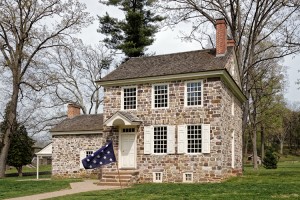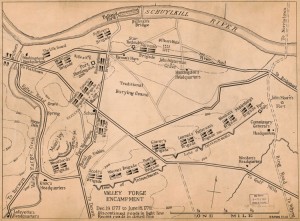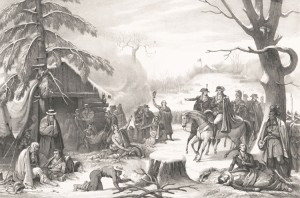Valley Forge 240
December 19, 2017
Two hundred and forty years ago today, on Dec. 19, 1777, American troops of the Continental Army set up camp at Valley Forge, Pennsylvania. The camp spanned an area between Valley Forge Creek and the Schuylkill River, about 25 miles (40 kilometers) northwest of Philadelphia. General George Washington and his troops stayed at Valley Forge until June 1778, during the American Revolution (1775-1783). The winter months were difficult for the Americans, who suffered from cold, hunger, and disease.

This house at Valley Forge National Historical Park was George Washington’s headquarters during the winter of 1777-1778. Here the general coordinated the daily operations of the Continental Army. Credit: © Delmas Lehman, Shutterstock
Washington led his troops to Valley Forge after discouraging defeats at nearby Brandywine and Germantown. These losses left Philadelphia, at that time the American capital, under British control. Washington’s soldiers had little food and too little clothing to protect themselves from the cold. The Continental Congress could not provide more supplies for them. The army of about 10,000 lived in crude log huts that they built themselves. On Dec. 23, 1777, Washington wrote: “We have this day no less than 2,873 men in camp unfit for duty because they are barefooted and otherwise naked.” An estimated 2,500 soldiers died at Valley Forge. Many others were either too weak or too sick to fight because of a smallpox epidemic.

This map shows the Valley Forge encampment from Dec. 19, 1777, to June 18, 1778. Washington’s headquarters, top left, is at the confluence of the Schuylkill River and Valley Forge Creek. Credit: Library of Congress
The winter at Valley Forge tested the loyalty of the American troops. Only dedicated patriots stayed with the Continental Army. Many people criticized Washington, but he held his position at Valley Forge throughout the winter and spring. He improved his troops with the help of Baron von Steuben, a former Prussian soldier. Steuben drilled the soldiers in a system of field formations. By spring, Washington had a disciplined, well-trained army. The news of the alliance between France and the United States reached Valley Forge on May 6, 1778. It cheered Washington and helped him move successfully against the British in June.

Winter at Valley Forge, Pennsylvania, was a difficult period for the Continental Army. General George Washington, depicted here on horseback, led his discouraged troops through several months of hardships. Credit: Library of Congress
Washington’s Continental Army generals at Valley Forge included von Steuben, Anthony Wayne, Nathanael Greene, Henry Knox, James Mitchell Varnum, and Marquis De Lafayette. Future president James Monroe, then a young lieutenant, and Lieutenant Colonel Alexander Hamilton also wintered at Valley Forge.
Valley Forge National Historical Park covers the campsite. For area, see National Park System (table: National historical parks). The park’s buildings and monuments were built in memory of Washington’s Continental Army. The old stone house Washington used as headquarters still stands. Other structures in the park include the Washington Memorial Chapel and the National Memorial Arch.


